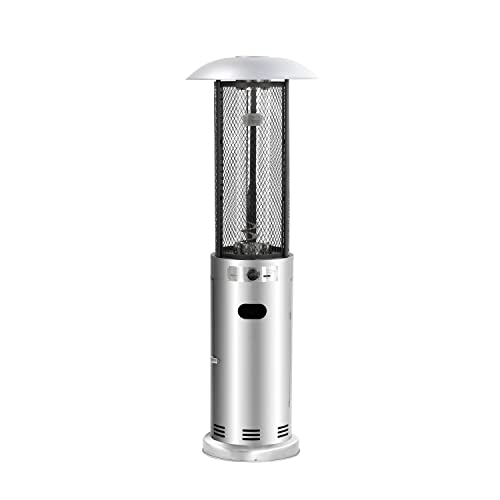Buying Gas Radiant Heaters: A Comprehensive Guide
Gas radiant heaters have acquired appeal in the last few years for their efficiency and ability to supply instantaneous heat. As more property owners and businesses try to find ways to keep their spaces comfortable, comprehending the features, benefits, and factors to consider when acquiring these heating systems can be extremely useful. This post explores the complexities of gas radiant heaters, helping potential purchasers in making informed choices.
What are Gas Radiant Heaters?
Gas radiant heaters are gadgets that utilize propane or natural gas to produce heat directly into a room. Instead of heating the air, they warm objects and individuals in their area, supplying convenience quicker and effectively. These heaters are popular for both indoor and outdoor settings due to their versatility and effectiveness.
Secret Features of Gas Radiant Heaters
- Direct Heating: Unlike conventional heaters that warm the air, gas radiant heaters offer direct heat, making them an efficient option for quickly heating up areas.
- Portability: Many models are available as portable systems, allowing them to be quickly moved from one place to another.
- Fuel Variety: Gas radiant heaters can be powered by gas or propane, giving users versatility based on availability and preference.
- Adjustable Settings: Most gas radiant heaters featured adjustable heat settings, enabling users to tailor the level of heat based upon their needs.
Advantages of Gas Radiant Heaters
- Energy Efficiency: These heaters transform gas into heat efficiently, resulting in lower energy bills compared to electrical heaters.
- Quick Heating: Radiant heat is felt practically immediately, making these heaters perfect for sudden temperature level drops.
- Low Maintenance: Gas radiant heaters usually need less maintenance than electric designs, making them a hassle-free alternative.
- Environmentally Friendly: When powered by tidy gas, these heaters can be a more environmentally sustainable choice compared to other heating approaches.
Kinds Of Gas Radiant Heaters
When it pertains to choosing a gas radiant heater, it's important to understand the various types offered. Below are the most common options:
- Indoor Gas Radiant Heaters: Designed for indoor areas, these heaters are typically vented or unvented and often featured built-in safety functions.
- Outdoor Gas Radiant Heaters: Commonly utilized in patio areas or outdoor dining locations, these heaters are developed to stand up to the elements.
- Wall-Mounted Gas Radiant Heaters: A space-saving choice, these units are ideal for smaller spaces and can be outfitted with various heat outputs depending upon the area's requirements.
- Freestanding Gas Radiant Heaters: These portable designs can be used in different areas, perfect for those who require flexibility.
Purchasing Guide: How to Choose the Right Gas Radiant Heater
When purchasing a gas radiant heater, a number of elements need to be considered to guarantee you select the best design for your space:
1. Heating Capacity
- Measured in BTUs (British Thermal Units), the heater's capacity determines how much area it can effectively warm. Purchasers need to assess their specific needs based on space size.
| Room Size (sq ft) | Recommended BTUs (for Gas Radiant Heaters) |
|---|---|
| 100 - 200 | 5,000 - 10,000 BTUs |
| 200 - 400 | 10,000 - 20,000 BTUs |
| 400 - 600 | 20,000 - 30,000 BTUs |
| 600 - 800 | 30,000+ BTUs |
2. Kind of Gas
- Think about whether you will be using propane or gas, as different heaters cater to various fuel types.
3. Security Features
- Try to find designs equipped with safety features such as automatic shut-off valves, tip-over protection, and oxygen exhaustion sensing units.
4. Installation Requirements
- Some heaters might need expert installation, especially vented models. Be sure to think about the expenses and requirements associated with installation.
5. Portability
- If flexibility is vital, think about portable designs that can be easily moved from one area to another.
Installation and Maintenance
Gas radiant heaters are normally uncomplicated to set up, particularly portable models. However, vented options might require expert installation to guarantee they meet local safety codes.
Maintenance typically includes:
- Regular cleaning to avoid dust buildup.
- Inspecting gas connections and fittings for leakages.
- Ensuring security functions are functional.
Suggestion: Regular checks around the unit can help extend its lifespan and preserve safety.
Frequently Asked Questions (FAQs)
Q1: Are gas radiant heaters safe for indoor use?A1: Yes
, as long as they are properly vented and equipped with required safety functions, they can be safely utilized inside.
Q2: Can gas radiant heaters be utilized in enclosed spaces?A2: Unvented gas heaters can present threats in enclosed areas due to possible suffocation or carbon monoxide gas buildup. Constantly ensure sufficient ventilation. Q3: How do I understand what size heater I need?A3: The proper size depends on the area you plan to heat. Describe the BTU chart
above to determine your needs. Q4: What is the difference in between propane and natural gas heaters?A4: The primary distinction lies in their energy source
; propane is delivered by means of tanks, while natural gas is typically piped into homes. Q5: How can I make the most of efficiency?A5: Ensure the heater is properly sized for your space, preserve it regularly, and think about using it in combination
with other heating methods for optimum comfort. Gas radiant heaters can be a fantastic addition to any home or organization, providing energy-efficient and quick heating solutions. By comprehending the various types, functions, and considerations
when purchasing, buyers can make informed decisions that meet their heating requires. With Buy Infrared Gas Heaters , these heaters offer convenience, reliability, and an inviting environment during chillier seasons.

